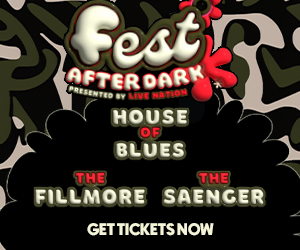What with the “Louis, Louis” Stage at this weekend’s French Quarter Fest and the celebration of his 100th anniversary at Jazz Fest, Louis Prima’s been on my mind. Supporters who’ve argued for his enduring relevance point with mechanical regularity to David Lee Roth’s cover of “Just a Gigolo/I Ain’t Got Nobody” (1985) and Brian Setzer’s “Jump, Jive and Wail” (1998), as if two songs in the past 25 years is all it takes to punch your cred card. Usually, that argument just makes those making it seem themselves out of touch.
But those who went through punk periods do have an affection for Prima, which is still a little mystifying. On the surface, they have little in common. Prima’s music and performance was good-natured and playful to the point of silliness, where punk is almost by definition confrontational, and too often humorless. By the time Prima was in Vegas and did his career-defining work in the late 1950s, he didn’t look old, but he didn’t look young anymore either, while punk is a young person’s game.
What they shared, though, was an affection for extremes. Both stylized what they did, and did it in an energetic, efficient way. Punk in most eras streamlines pop, sands down the sugary edges, and ramps up the velocity and intensity. Prima presented an extreme version of Italian-ness, highlighting a non-mainstream culture and its songs, and foregrounding rhythm and energy over melody to put them over.
Ultimately, it’s the shared sense that they weren’t making music for everybody–that they weren’t trying to be mass culture–that unifies Prima and punks. Obviously, Prima could have been more mainstream had he really wanted to–and appearing vocally in The Jungle Book certainly moved him that direction–but his preference for success on his terms rings true with almost every group, and particularly those who’ve chosen more marginal artistic paths.



